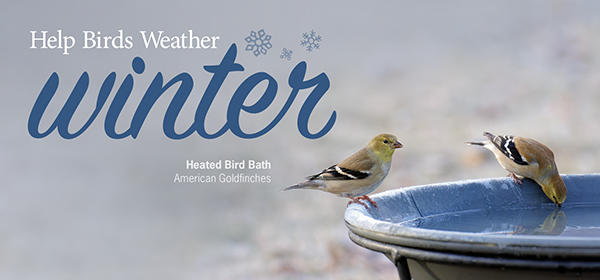Need a Last Minute Gift? We've got it!
Click HERE for gift ideas for the bird lovers in your midst.
🎄20% OFF One Non-Bird Food Item* from December 16 - 21, 2025🎄

*20% OFF One Non-Bird Food Item. One discount per purchase. Offer not valid on previous purchases,
gift cards, optics, DSC memberships, Smart bird feeders, squirrel resistant feeders, pre-wrapped gift items and jewelry.
While supplies last; sorry no rain checks. Offer valid at WBU Kitchener, and online.

Give Birds Everything They Need to Survive and Thrive this Season
In winter, when days shorten and nights stretch endlessly, your backyard bird feeders transform from convenient snack spots to essential survival stations. With each dip in temperature and every blast of wind, it's a challenge for birds just to stay warm.
Birds have a few temporary tricks for making it through winter. You may notice birds looking "puffier" than normal. This natural fluffing creates space under their feathers and better insulation, trapping warm air close to their bodies. Birds also perch on one leg to minimize heat loss or shiver to generate immediate warmth.
As for those lengthy nights, small songbirds must rely entirely on their fat reserves, burning through their energy just to stay warm until dawn. In fact, a tiny songbird can burn through an astonishing 75-80% of its energy stores every night. That’s like a person shedding 20 pounds overnight and having to gain it all back the next day!
You can help your birds survive the challenges of winter with a few simple actions.
- Stock your feeders with high-fat foods, such as our Winter SuperBlend®️, Jim's Birdacious®️ Bark Butter®️ or SuperSuet®️ products.
- Offer an open source of water for birds to clean their feathers, helping their insulation efforts.
- Provide shelter from wintry elements with natural plant cover or a cozy roosting box.
These few acts of kindness will help the birds and will bring a little joy to your winter experience. Visit us soon for more expert advice to help your birds thrive this winter.
Local Delivery: Our team personally handles and and delivers all local deliveries to ensure timely service.
Local delivery in our Tri-Cities; Kitchener, Waterloo & Cambridge, is free when spending $99, pre-tax
Shipping: We continue to use courier services, however due to larger volumes, it may take longer than usual to arrive.
Please call the store to discuss shipping when outside the Tri-Cities limits.
Thank you for your patience and understanding, and for shopping local!


